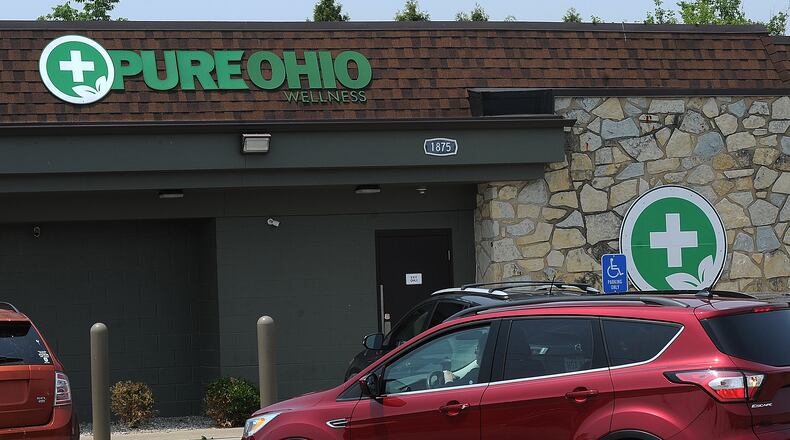House Bill 168, introduced by state Reps. Jamie Callender, R-Concord, and Casey Weinstein, D-Hudson, also would implement a 10% sales tax on adult-use cannabis products, if passed.
“It’s time for Ohio to act on this before we fall too much further behind our neighbors,” said Weinstein. “Adult-use is good for our economy, good for our justice system, and the right thing to do.”
Expanded eligibility
Senate Bill 9, introduced by state Sens. Steve Huffman, R-Tipp City, and Kirk Schuring, R-Canton, would expand the state’s medical marijuana program by adding to the list of treatments for medical conditions and adding more permissible forms of medical marijuana.
Huffman is a physician. The Ohio Medical Marijuana Control Program does not list him as a doctor who is certified to recommend marijuana.
The proposal also would create a 13-member oversight commission that would oversee the Division of Marijuana Control within the Department of Commerce to oversee the state’s medical marijuana program.
Citizen initiative
The Coalition to Regulate Marijuana like Alcohol is collecting petition signatures to get a measure on November’s ballot. The proposal was submitted through an initiated statute, so it is not an amendment to Ohio’s constitution.
The coalition needs to get 124,000 signatures from at least half of Ohio’s 88 counties by July 5 to proceed.
Tom Haren, spokesman of the Coalition to Regulate Marijuana Like Alcohol, said an adult-use recreational program, if legalized, should not eliminate the medical marijuana program: instead, they should work side by side.
His coalition’s proposal includes language that would allow an adult-use program to fall under the same system that oversees the state’s medical marijuana programming.
Oversight change
Other proposals could see some state agencies taking a step back from overseeing the medical marijuana program.
The state’s proposed budget, passed by the Ohio House and working its way through the Ohio Senate, would create the Division of Medical Marijuana Control within the commerce department. Oversight of the state’s medical marijuana programming would be passed onto this new division.
The Board of Pharmacy regulates medical marijuana dispensaries and the patient registry, and the Department of Commerce regulates cultivators, processors, and testing laboratories, according to a spokesperson of the commerce department.
“The proposal in the budget consolidates the (Medical Marijuana Control Program) under one agency, Commerce. What is proposed in the budget would simply allow for the necessary technical statutory language to achieve a clean consolidation of the program and no medical marijuana policy matters are included in the budget,” spokesperson Jennifer Jarrell said.
Marijuana and youth
Prevention and recovery professionals urge caution with current proposals before the Ohio House and Senate.
Montgomery County Prevention Coalition manager Colleen Oakes testified against an earlier version of Senate Bill 9, but said she is hopeful about proposed changes to the language.
The coalition’s core does not lie in prohibition. In fact, some of her board members are registered patients in the state’s medical marijuana program.
“We also recognize that medical marijuana does have benefits for some individuals,” she said. “But we’re trying to protect our youth and our most vulnerable populations.”
Oakes wants to see provisions against social media advertising of medical marijuana remain in any changes that come to Ohio medical cannabis control.
A 2017 U.S. Centers for Disease Control study found exposure to advertisements related to marijuana were associated with higher odds of current marijuana use among adolescents.
“To them, the more that they see people use it, it seems more normal to them,” Oakes said. “They’re not thinking about the harm that it can cause to them or their negative associations with a substance, and then they’re more likely to use.”
She said regulations that limit marijuana advertisements to adolescents, and educational campaigns on harmfulness of illicit marijuana use, are needed.
The prevention coalition leader also disapproves of provisions that would add opioid use disorder to the list of qualifying conditions and pivot medical marijuana program oversight solely to the Ohio Department of Commerce. She’d be happier seeing the program fall under the pharmacy board.
“We really are urging our lawmakers to follow the science on this,” she said. “If we’re calling it a medical marijuana program, we need to treat it like medicine and follow research.”
About the Author

